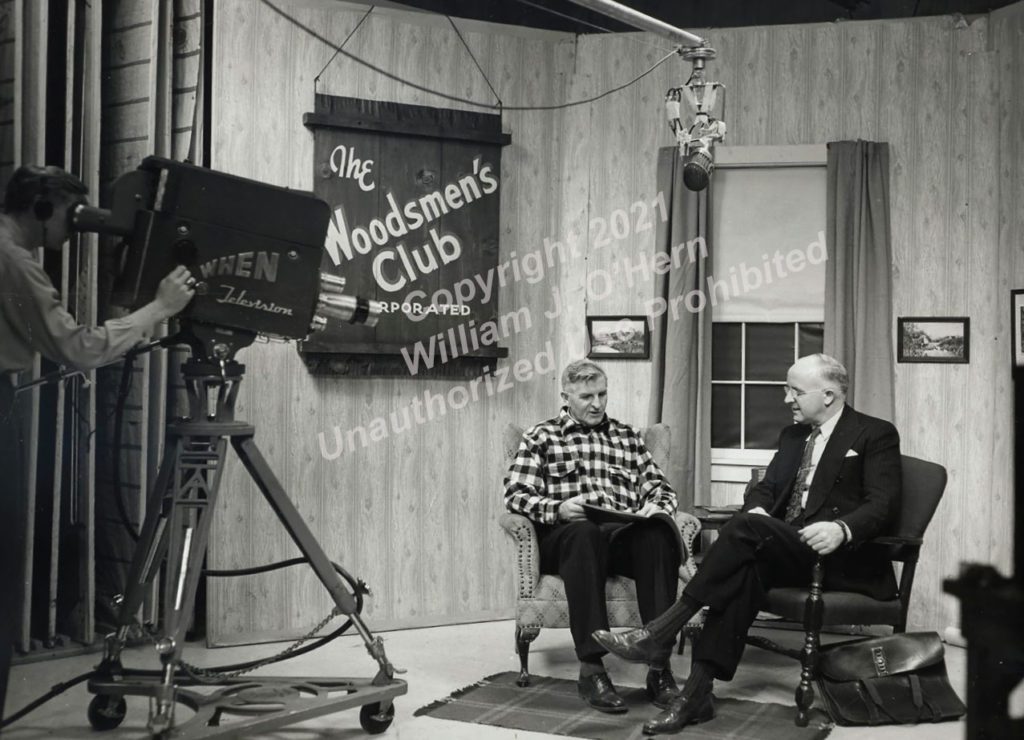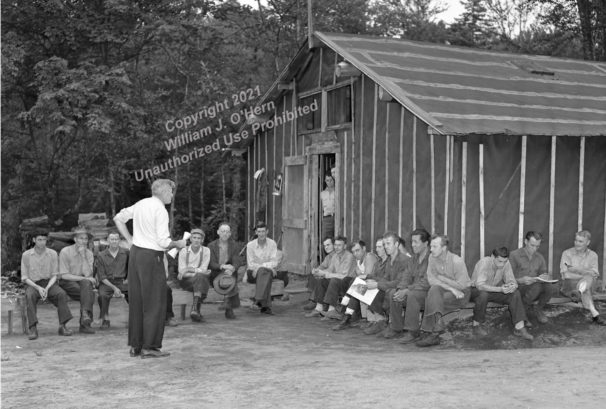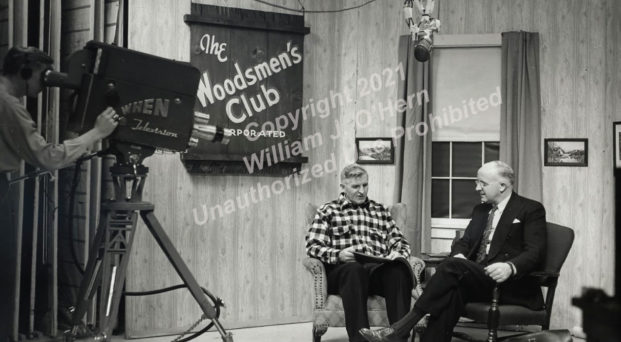What current readers of The Northern Logger & Timber Processor might not know is the long-standing magazine’s origin. The Rev. Frank A. Reed was an enthusiastic supporter and proud practitioner of supporting lumberjacks

A Look Back In Time
A Life-Long Interest in Loggers and Logging History
An article printed in “The Northern Logger “, August 2021
William “Jay” O’Hern is an Adirondack-based author. In this new monthly column, he writes about the history of the north woods logging and timber industry, as well as the lives of the men and women who made the industry what it is today. The author’s website: www.adirondackbooksonline.com has a variety of history books that span New York’s Adirondack Mountains, North Country and Upstate, logging, folklore and tales.
Readers are encouraged to share interests, memories, experiences and photos of their own “Long Gone” logging industry involvement at jay@adkwilds.com.
Why do people work in the woods? The question usually has a simple and practical answer: The need to earn a wage. That was certainly what initially drew me to the timber industry as a young man.
My first exposure to the timber industry took place at Crockett’s sawmill in Red Creek, N.Y. during the late 1960s. I had recently quit work at Hammermill Paper Company in Oswego, N.Y. It was during the time when large paper-cutting shears were operated with foot trip pedals. I had taken the job to be one of five men who worked as a “trouble-shooter” or quick-response repair crew. The position involved my crew to resolve the problem when a large semi-liquid sheet of paper broke overhead while in transit over an array of rollers that squeezed and dried. Between learning how to quickly correct a break in the huge (and intimidating) papermaking machine, worrying about the constant danger of negotiating through the machine’s narrow interior passageways, and the daily dose of hearing the crack that meant a gigantic v-belt had broken and was sailing helter-skelter at high speed with enough force to kill a person… well, let’s just say that on-the-job injury or death were pretty much constant risks.
Despite the danger of the environment, I enjoyed the work. My employment at the sawmill exposed me to mill workers, drivers of log trucks, and various lumbermen and women. At the same time that I worked in the sawmill, I got curious about the broader scope of the industry. I learned about it by reading The Lumber Camp News and The Northeastern Logger, predecessors to The Northern Logger & Timber Processor. In keeping up with the times, as one might expect, the magazine’s focus and content changed over the years, and I followed along.
From this early exposure, I became fascinated by the industry’s history. It is my belief that in order to think about the future of the timber industry, we would do well to learn lessons from the past, from the men and women who made logging and processing what it is today.

COURTESY TOWN OF WEBB HISTORICAL ASSOCIATION
Rev. Frank A. Reed conducting a ministerial service at Gould Paper Company’s Camp 9, 1948.
So, a history lesson:
What current readers of The Northern Logger & Timber Processor might not know is the long-standing magazine’s origin. The Rev. Frank A. Reed was an enthusiastic supporter and proud practitioner of supporting lumberjacks – the young, the middle-aged, the inebriated, the sick, the down-and-out, the homeless and the old-timers. Rev. Reed was also the author of the classic Lumberjack Sky Pilot (North Country Books, 1965). His stories along with pioneering, ground-breaking sky pilots Frank Higgins, Aaron W. Maddox, Charles Atwood and Clarence W. Mason’s and true tales – of spending winter nights in the mountains, experiences with big draft horses, an escape from a falling rock, being lost in the woods – according to Rev. Reed “laid the foundation for the creation of The Lumber Camp News,” a publication Reed established in 1939 for the entertainment and education of men in the lumber camps.
When Rev. Reed began missionary work in the lumber camps in 1915, he recalled, “There were thirty-two log drives on the rivers and streams in the Adirondack area.” With increased reliance on logging trucks by the early 1950s, most if not all of the pulp wood was hauled to the mills over heavy-duty rubber tires. The heavily-loaded trucks have become a common sight on northern highways. Thousands of cords of logs had been driven down the Hudson River from below its start at Henderson Lake north of Newcomb. It is about 75 miles to the log landings at Little Bay near Glens Falls, where the Finch, Pruyn Company had a large mill.
During all the time Rev. Reed was in the lumber camps, he was never denied the privilege of speaking to the workers. He did recall one camp boss early in his career as a lumberjack camp minister in his “The Sky Pilot’s Page” in The Northeastern Logger’s July 1952 issue: “The foreman was pleasant enough and cordial but he had an idea that a church was the only proper place for the preacher to exercise his talents. I did not argue the question with him. It was his camp and he had a right to run it as he saw fit; but, when I bade him good-bye the next morning, I said, ‘I will be around again in a couple of months and I will come in and see how you are getting along.’ ‘Sure,’ he said, ‘come in any time you are in these parts. You will be welcome.’”
Reed had great respect for the men and women who worked in the woods. Religious activities were much more a part of the logging camp scene than one might think. Most loggers grew up in families with some religious background, and so had some early Christian training. Therefore, a minister who came into camp was well-received.
Rev. Reed was proud of his “sky pilot” or traveling preacher status. He traveled from back woods camp to camp on foot, riding “tote teams,” and later by car and in log trucks. He offered Christian education and led bunkhouse congregations in song and prayer; he comforted and consoled, distributed Bibles and reading matter and listened to whatever the men wanted to talk about. Always teaching, always inspiring, Reed told stories that imparted messages that could be applied to one’s life.
While The Northern Logger is no longer a religious publication, it does seek to follow Rev. Reed’s legacy and publish stories about the industry that can help loggers and timber processors live better lives. I hope this column on the history of the industry can be a part of that fine tradition.

COURTESY PHYLLIS WHITE, EXECUTIVE COORDINATOR NYS WOODSMEN’S FIELD DAYS, INC.
Rev. Frank A. Reed being interviewed by WPIBSWatertown, N.Y. about his popular “Lumberjack Sky Pilot” film he made during the 1930s and 1940s.